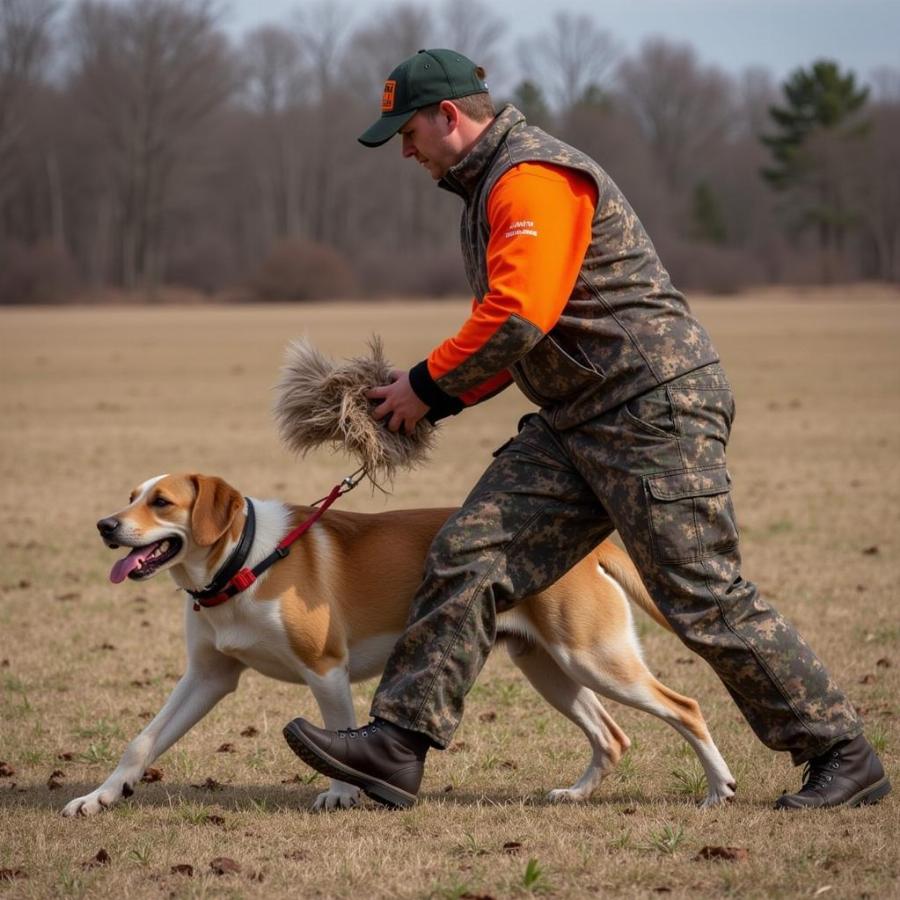Deer tracking dogs are highly specialized canines bred and trained for the challenging task of tracking wounded deer. These incredible dogs possess an exceptional sense of smell, unwavering determination, and the ability to navigate through dense terrain, making them invaluable assets to ethical hunters. Choosing the right deer tracking dog requires careful consideration of various factors, from breed characteristics to training requirements. This comprehensive guide will equip you with the essential knowledge to select and care for your perfect deer tracking dog.
Choosing the Right Breed for Deer Tracking
Selecting the right breed is the first and most crucial step in finding your ideal deer tracking dog. While several breeds can be trained for tracking, some possess innate qualities that make them exceptionally well-suited for this demanding task. Consider breeds known for their powerful noses, stamina, and trainability. Popular choices include Bavarian Mountain Hounds, Hanoverian Scenthounds, and Plott Hounds.
What are the key characteristics to look for in a deer tracking dog? A keen sense of smell is paramount, followed by physical endurance to navigate challenging terrain. A dog with a strong prey drive and a willingness to please makes training significantly easier.
Training Your Deer Tracking Dog: Essential Techniques and Tips
Training a deer tracking dog requires patience, consistency, and a structured approach. Start early, introducing your dog to deer scent using specialized training aids. are beagles hunting dogs Practice tracking on marked trails, gradually increasing the difficulty and length of the tracks. Utilize positive reinforcement techniques to motivate and reward your dog’s progress.  Training a deer tracking dog with specialized aids
Training a deer tracking dog with specialized aids
How long does it take to train a deer tracking dog? While some dogs show aptitude quickly, it typically takes several months to a year of consistent training to develop a reliable tracking dog.
Essential Gear for Deer Tracking
Having the right gear is crucial for both the handler and the dog. Invest in a sturdy tracking harness, a long leash, and a GPS tracker for your dog. hunting deer with dogs For yourself, wear appropriate clothing for the terrain and weather conditions, and carry a first-aid kit for both you and your dog. Don’t forget essentials like water and high-energy snacks for your canine companion.
What kind of harness is best for a tracking dog? A well-fitted tracking harness distributes pressure evenly and allows for freedom of movement, essential for navigating rough terrain.
Ethical Considerations in Deer Tracking
Deer tracking is a vital tool for ethical hunting. By utilizing a trained tracking dog, hunters can minimize the suffering of wounded animals and ensure responsible harvesting practices. It is crucial to adhere to local hunting regulations and prioritize the well-being of both the hunted animal and the tracking dog.
Why is using a deer tracking dog considered ethical hunting? It allows for quicker recovery of wounded deer, minimizing suffering and preventing unnecessary waste of game.
Maintaining Your Deer Tracking Dog’s Health and Wellness
A healthy dog is a happy and effective tracker. Provide your deer tracking dog with a balanced diet, regular veterinary check-ups, and plenty of exercise. gun names for dogs Pay attention to their paws, checking for injuries after each tracking session. Regular grooming will also help maintain their coat and prevent ticks and other parasites.
What are some common health issues to watch out for in deer tracking dogs? Paw injuries, cuts, and exhaustion are common, so regular checks and preventative care are vital.
Conclusion
Choosing and training a deer tracking dog is a significant commitment, but the rewards are immeasurable. These incredible animals not only enhance hunting success but also contribute to ethical hunting practices. By understanding the breed characteristics, training techniques, and care requirements outlined in this guide, you can embark on a rewarding journey with your deer tracking partner. dogs and deer hunting Remember, a well-trained deer tracking dog is more than just a hunting companion; they are an invaluable asset to responsible and ethical hunting.
FAQ
-
What is the best age to start training a deer tracking dog? Ideally, training should begin as early as possible, even with puppies.
-
How do I introduce my dog to deer scent? Use specialized training aids like drag rags or deer hides.
-
Are all dog breeds suitable for deer tracking? No, some breeds are naturally more predisposed to tracking than others.
-
What should I do if my dog gets injured while tracking? Carry a first-aid kit and seek veterinary attention if necessary.
-
How can I find a reputable breeder of deer tracking dogs? Research breed-specific clubs and organizations for recommendations.
-
What are the legal requirements for using a deer tracking dog? Consult your local hunting regulations for specific requirements.
-
How can I keep my dog safe during tracking? Use a GPS tracker and ensure they are properly equipped for the terrain.
Beaut Dogs is your ultimate resource for all things canine. We provide comprehensive information, expert advice, and a passionate community of dog lovers. For personalized guidance on deer tracking dogs or any other canine-related questions, contact us at Email: [email protected]. Beaut Dogs is here to help you navigate the wonderful world of dog ownership.